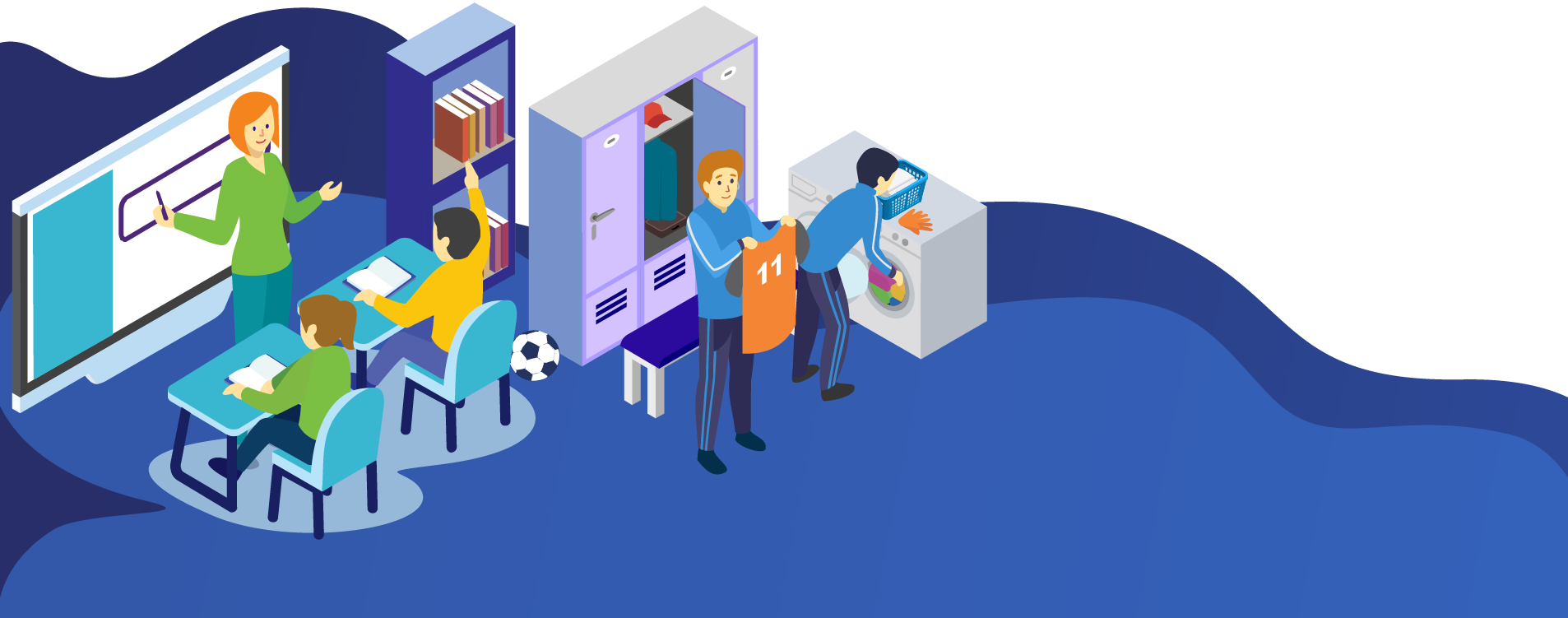Why is interactive learning so much better than traditional methods?
Interactive learning is the next big thing, do you know what to expect? Here’s a quick breakdown of everything interactive, and how you can transform your classroom to help embrace this new type of learning.

Interesting, exciting and engaging: three qualities each teacher wants their lesson to have. They can achieve it with interactive learning, but some are afraid to take the leap from traditional learning methods.
What is interactive learning?
We promise it’s not just another education buzzword. It’s a real thing that will vastly improve your student’s learning environment.
Interactive learning is a practice where students are invited to participate in the lesson – not just write down whatever the teacher is saying. It’s a dynamic learning experience where the kids feel directly involved in what’s going on.
Whether it’s asking students to solve a problem in groups, exploring the outside world, or simply playing an (educational) game during class, interactive learning can take many forms.
Let students take the lead in discussions and drive the direction of lessons and you’ll begin to reap the benefits of interactive learning. These include:
- Improved retention of information
- Lays the groundwork for real-world problem solving
- Encourages independent study from an early age
- Reinvigorates lessons for both student and teachers
- Strengthens critical thinking
The four key elements of interactive learning:
1. Classroom collaboration
Students can discuss projects and work together, improving their communication skills as they go. By working together they’ll reach your educational objectives.
2. Independence
Interactive learning allows students to take control of their own learning and choose their direction of study. This choice allows them to complete tasks in a way that fits with their preferred style of learning – hopefully meaning they’ll enjoy it and learn more in the process.
3. Purpose
Kids tend to disengage if they can’t see purpose in what they’re doing. By letting them solve real-world problems in lessons, or using technology/devices they may use in real life, the students will respond more to these lessons.
4. It’s fun!
The vast majority of students feel disengaged when they are stuck behind a desk in silence. Interactive learning allows students to get up and move around while breaking the monotony of day-to-day school life.
How technology can enable interactive learning
There are many ways to set up interactive learning processes within your school. Technology can offer a real boost so why not take advantage of it?
Electronic whiteboards and interactive screens
There’s plenty you can do with electronic whiteboards and interactive screens. They’re a great way to get students involved in lessons.
Use whiteboard games and see how the kids engage with them. The element of competition and tiers of achievement will help to motivate them.
Interactive screens make it easy for students and teachers can share and present things with ease. Teachers can use platforms such as YouTube, Skype, podcasts, social media and educational gaming apps to give students many more opportunities for learning.
iPads
iPads are rapidly becoming commonplace in schools. This is great for the students as they are probably used to having this technology at home and can use it intuitively.
Instead of photocopies of book chapters, an e-book on an iPad can be much more effective, especially if they can add their notes directly to the page.
Shared documents on iPads can also allow students to develop collaboration and communication skills.
There’s plenty you can do to embrace interactive learning, and the tech might just give teachers the helping hand they need to stay on top of their already hefty workload.
See how your school can install interactive learning equipment today by getting in touch with Utility Rentals.

